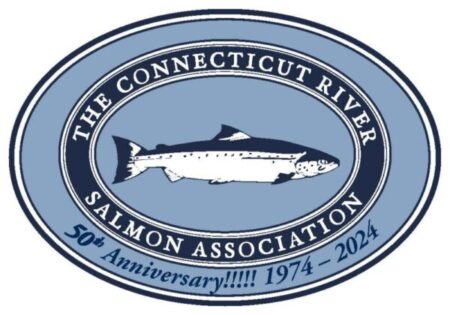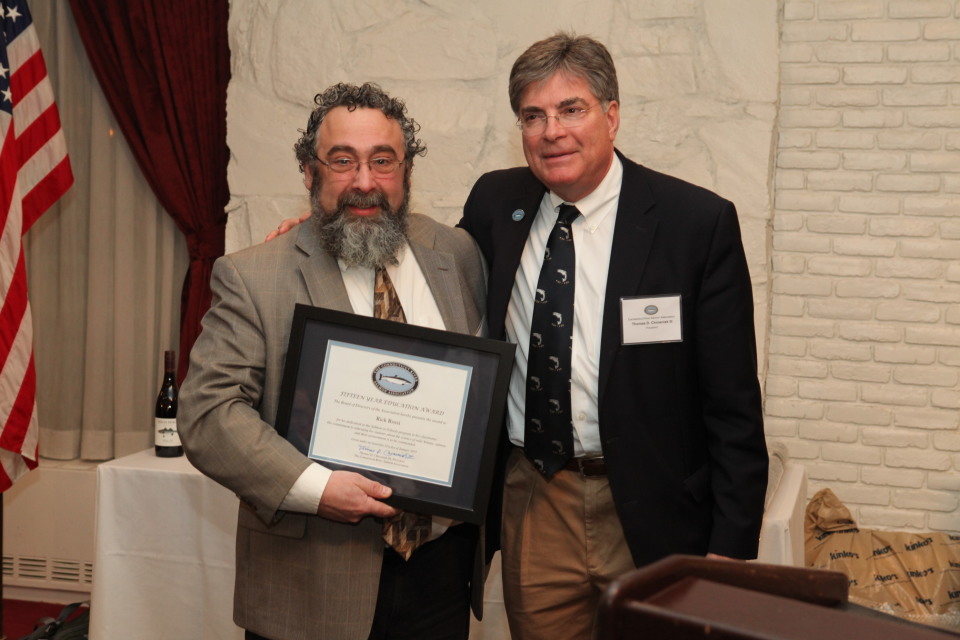Salmon-in-Schools
CRSA operates its Salmon-in-Schools program in many Connecticut public schools, providing a valuable scientific and environmental learning project enjoyed by children from kindergarten through high school. Students participate actively in all phases of the program, from rearing salmon eggs in the classroom to stocking rivers. CRSA provides guidance and teacher education, technical assistance and materials, and vital links to the Connecticut Department of Energy and Environmental Protection (DEEP). For more information, click here
General: The Connecticut River Salmon Association (“CRSA”) operates its Salmon-in-Schools Program in approximately 65 Connecticut schools. A number of these schools operate multiple tanks in multiple classrooms. Preference is given to schools in the Connecticut River watershed. The program involves incubating Atlantic salmon eggs in a chilled aquarium tank beginning in early January. These eggs will have been harvested from salmon which have previously returned to the Connecticut River. The eggs can be expected to hatch about mid-February into alevin, a small fish of about one to one and half inches, supported by a yolk sac (the egg residual) on its stomach. The yolk sac is its sole source of food supply. By the end of April or early May, these creatures are approaching the “fry” stage, where the sac will be gone and the fish look like a streamlined small minnow.
Stocking: The fish are ready for stocking by late April or early May. The site will be a tributary of the Connecticut river selected by the state Department of Energy and Environmental Protection (DEEP) and CRSA. In fact, these fish must be stocked then, because they are about to exhaust the food supply of the yolk sac and they must have access to natural food. They cannot be sustained further in the classroom tank. The stocking will in all likelihood be conducted with another school(s). The transport of these small fish for stocking purposes must be done carefully because it involves temperature and oxygen risks, which are direct functions of time and distance. This is the schools’ responsibility. Many make a full class field trip out of it.
Equipment Costs: The total investment required is approximately $600-$650. The largest cost is the refrigeration chiller. CRSA does not make these, nor does it have any financial interest in them. The one we have found to be reliable is manufactured by a California company and sold to educational institutions. This is a critical piece of equipment, as temperatures in the 2-4 centigrade range are required. Tanks will be served by a reliable filter, and must be thoroughly insulated.
CRSA Support: CRSA will provide all new teachers with classroom posters, an equipment list and a notebook of materials for background purposes. It will introduce them to sources of educational materials.
A CRSA representative will deliver the eggs and with new schools, assist with the stocking if requested. In addition, CRSA will have a specific liaison person assigned to each school; that person is available for consultation, advice, troubleshooting and for arranging classroom appearances of Department of Energy and Environmental Protection or CRSA personnel for educational purposes. In addition, we have access to a substantial video library and are familiar with potential field trips for interested teachers.
Educational Attributes: The program has been conducted in classes ranging from grades 1 and 2 to high school seniors, all with success. It provides a unique window into an effort to restore a spectacular species extirpated from its environment almost 200 years ago. It also provides an excellent aquaculture, marine ecology, conservation and environmental tool. The Atlantic Salmon Federation provides excellent educational materials which are available through CRSA. These are designed to make this program a part of a regular school science program. Legacy program salmon eggs can only be procured through CRSA. We seek to engage responsible and committed teachers, and we leave the teaching to them.
Risks: Some incidental mortality among eggs and alevin can be expected in virtually all tanks. These major casualties, coming at the egg stage, could have been caused by a variety of factors: incipient disease, chlorine or other foreign substance introduction, damage in transit, etc. We simply don’t know. We cannot replace eggs once this program gets started. Introduction of a foreign substance is the most likely cause; virtually all of our eggs come from a single female and the separated incidents of casualty point to a local origin. Chlorine is the major suspect; schools using chlorinated water have to take extra precautions to ensure none is directly or indirectly introduced. It can be safely managed: operating the tank for a few days before salmon are delivered, even if chlorinated water is involved, will eliminate all of the chemical in about thirty-six hours. Spare amounts of “clean” water need to be maintained to restore levels subsequently.
In addition, there is a risk of chiller failure. We have had one chiller fail at the outset, upon delivery, and it was promptly replaced. We maintain one spare chiller in Hartford and one spare chiller in New Haven for emergency purposes.
Field Trips: As noted above, many schools have made a full or partial field trip out of the stocking exercise. In addition, there are public viewing opportunities at several of the Connecticut and Farmington River dam fishways, and CRSA can provide information.
- Late summer: CRSA to confirm participating schools
- Late summer/early fall: equipment ordered / purchased.
- September: notebooks to new teachers containing instructional and background materials.
- Mid-October: half-day seminar for new teachers.
- Before Thanksgiving break: tank up and running.
- Mid December: egg delivery.
- Late January: hatching.
- Late April / Early May: collection for stocking.

